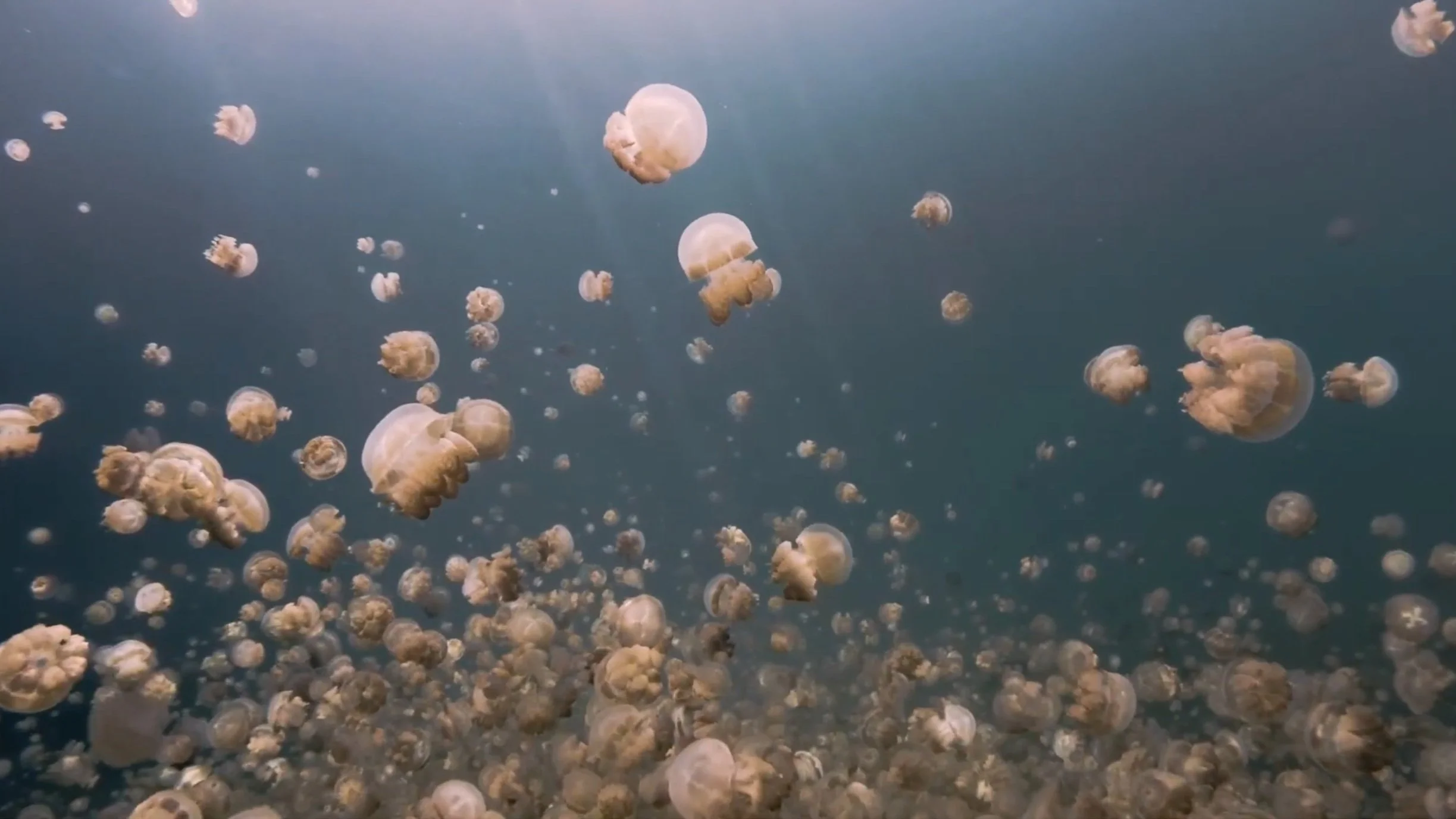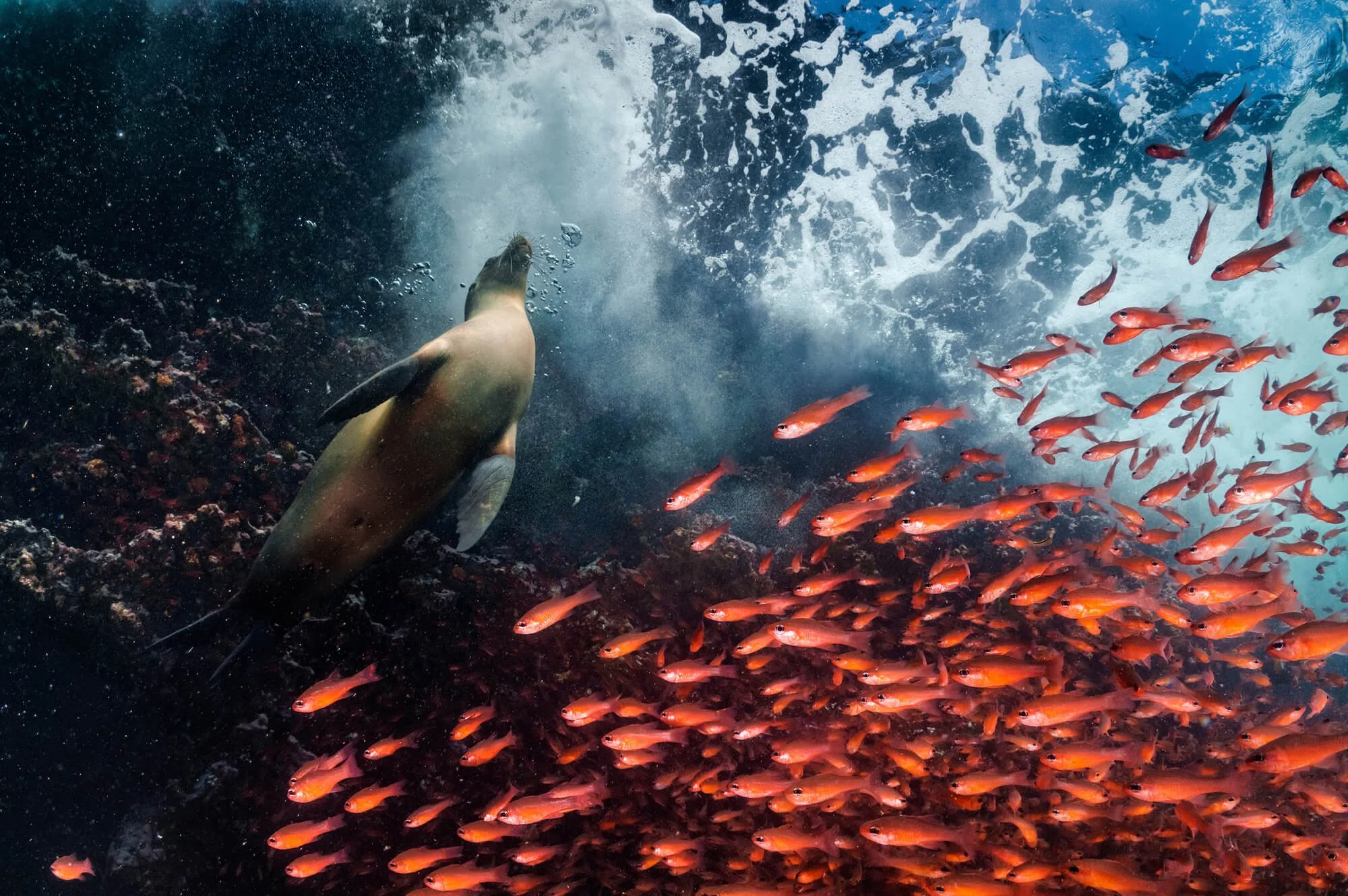A lake full of golden jellyfish
This is Ongeim'l Tketau lake in Palau – home to millions of harmless golden jellyfish. Every day, as dawn breaks over the Western Pacific, this miniature galaxy of marine life begins a unique migration in search of the sun.
As the day begins, the jellyfish – the endemic species called Mastigias papua etpisoni – slowly pulse eastwards. Avoiding predatory anemones along the rocky edges of the lake, the jellies travel towards the centre. By noon, with the sun directly overhead, they drift in the light, soaking up the rays. Inside their translucent bodies, zooxanthellae use the sun’s energy to produce energy for the jellyfish. In return, these single-celled organisms get a free mobile home, with plenty of access to sunshine. It’s one of nature more enduring relationships, but it’s a fragile one.
Ongeim'l Tketau (or Jellyfish Lake as it’s more commonly known) is separated from the nearby ocean by a stretch of lush green jungle but linked to the tides. It’s one of 53 marine lakes in this area of Palau, and because of their isolation, each has a delicately balanced underwater ecosystem. In 2015/16, a drought caused by the El Niño phenomenon resulted in a mass die-off of the jellyfish medusas – the blobby, grown-up phase of their life cycle.
Photos and film by Rick Miskiv
In the empty lake, tiny polyps clung to life underwater, ready to repopulate Ongeim'l Tketau. The lake is carefully managed by the Koror State Government, and monitored by the Coral Reef Research Foundation. Together, they’ve been studying the long-term dynamics of the lake since 1994, and recently reported that the jellyfish are now returning. Through careful management and monitoring, the researchers, people and government of Palau are working to help make sure the lake fully recovers, giving future generations the chance to witness this natural wonder.
Parley collaborator Rick Miskiv, who shot the above photos and footage in 2014, explains that “there is a cognitive dissonance when you realize the jellyfish don’t sting at all. As the fear of abates you are immersed in the surreality of the light rays shining on millions of jellyfish migrating to the light. It’s a one-of-a-kind underwater experience.”














